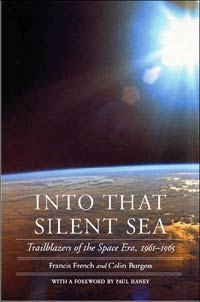Review: Into That Silent Seaby Jeff Foust
|
| In an unorthodox but ultimately worthwhile grouping, the authors devote a chapter to “the two Wallys”—Wally Schirra and Wally Funk, the woman who was among the so-called “Mercury 13” women who tried to become astronauts. |
The emphasis of Into That Silent Sea is not on a big-picture view of the spaceflight competition between the United States and the Soviet Union, but rather sketches of the astronauts and cosmonauts who flew into space on the Mercury and Vostok/Voskhod missions during the early-to-mid 1960s. Each chapter is devoted to one or more of the people who flew—or desired to fly—on those missions, in chronological order from Yuri Gagarin to the Voskhod 2 crew of Pavel Belyayev and Alexei Leonov, the first man to walk in space nearly four years after Gagarin’s flight. The chapters are, in essence, mini-biographies, focused on the mission of interest but including some history about their lives both before and after the mission. There’s little effort by the authors to synthesize these biographical portraits into a broader theme about the Space Age, other than that these were extraordinary people called upon to do extraordinary things.
French and Burgess rely extensively on interviews with both the astronauts and cosmonauts (where possible) and others who worked with or otherwise knew them. This provides an opportunity for some different insights, from people like Dee O’Hara, a young nurse assigned to work with the Mercury 7 astronauts, and Jim Lewis, a helicopter pilot who attempted to recover Gus Grissom’s Mercury capsule and later went on to work for the space agency in human factors engineering. The chapter selection is at times interesting: while Alan Shepard and Grissom get their own chapters, John Glenn, the first American in orbit, has to share a chapter with Scott Carpenter, the second American in orbit. In another unorthodox but ultimately worthwhile grouping, the authors devote a chapter to “the two Wallys”—Wally Schirra and Wally Funk, the woman who was among the so-called “Mercury 13” women who tried to become astronauts.
If you’re already familiar with the first astronauts and cosmonauts, Into That Silent Sea won’t provide any grand new insights about these people, but may offer some anecdotes or other tidbits not otherwise well-known about them. The book, however, does offer some excellent profiles of these individuals that are accessible to both newcomers to space history and well-read enthusiasts alike. This book doesn’t explain the fascination with the early history of the Space Age, but does help satisfy it.
